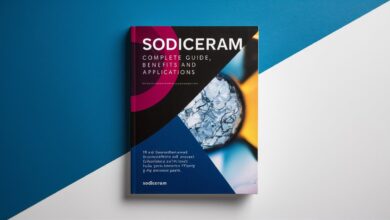Understanding 10.110.88.0/21: A Comprehensive Guide to IP Addressing and Subnetting

In the world of networking, IP addressing and subnetting are foundational concepts that ensure efficient communication between devices. One such example is the CIDR notation 10.110.88.0/21, a subnet that plays a critical role in organizing and managing IP addresses within a network. This article will delve into the intricacies of this subnet, exploring its structure, applications, and best practices for implementation. Whether you’re a network administrator, IT professional, or a curious learner, this guide will equip you with the knowledge to understand and utilize 10.110.88.0/21 effectively.
What is 10.110.88.0/21?
10.110.88.0/21 is a Classless Inter-Domain Routing (CIDR) notation that defines a range of IPv4 addresses. The notation consists of two parts: the base IP address (10.110.88.0) and the subnet mask (/21). The /21 indicates that the first 21 bits of the 32-bit IPv4 address are reserved for the network prefix, leaving the remaining 11 bits for host addresses. This subnet belongs to the private IP address range defined by RFC 1918, specifically within the 10.0.0.0/8 block, making it suitable for internal networks.
Understanding this subnet requires breaking down its components. The base IP 10.110.88.0 serves as the starting point, while the /21 mask determines the total number of usable IP addresses. This subnet can support up to 2,046 hosts (2¹¹ – 2), accounting for the network and broadcast addresses. Such a large address pool makes it ideal for medium to large organizations requiring scalable internal networks.
Breaking Down the CIDR Notation: 10.110.88.0/21
To fully grasp 10.110.88.0/21, it’s essential to decode its structure. The subnet mask /21 corresponds to a dotted-decimal format of 255.255.248.0. This mask divides the IP address into network and host portions.
- Network Address: The first IP in the range (10.110.88.0) identifies the network itself.
- Usable Host Range: Addresses from 10.110.88.1 to 10.110.95.254 are assignable to devices.
- Broadcast Address: The last IP (10.110.95.255) is reserved for broadcasting messages to all hosts in the subnet.
The subnet spans multiple classful Class C networks, which explains its broad range. For example, 10.110.88.0 to 10.110.95.255 covers eight consecutive /24 subnets. This aggregation simplifies routing tables and reduces administrative overhead.
Key Features of the 10.110.88.0/21 Subnet
- Large Address Space: With 2,046 usable IPs, this subnet accommodates extensive device deployments, such as enterprise campuses or data centers.
- Private IP Range: As part of the 10.0.0.0/8 block, it avoids conflicts with public IPs and enhances security by isolating internal traffic.
- Flexible Subnetting: The /21 mask allows further subdivision into smaller subnets (e.g., /24 for departmental segmentation).
- Efficient Routing: Aggregating multiple smaller subnets under a single /21 prefix optimizes routing efficiency.
Practical Applications of the 10.110.88.0/21 Subnet
This subnet is versatile and widely used in scenarios requiring structured IP management:
- Enterprise Networks: Large organizations deploy /21 subnets to allocate IPs across departments, floors, or geographic locations.
- Internet Service Providers (ISPs): ISPs use private /21 blocks for customer-premises equipment (CPE) or internal infrastructure.
- Virtual LANs (VLANs): Segmenting VLANs within a /21 subnet ensures logical isolation while maintaining a unified addressing scheme.
- Cloud Environments: Cloud providers leverage such subnets for virtual networks, enabling scalable resource allocation.
Benefits of Using the 10.110.88.0/21 Subnet
- Scalability: The large host capacity supports network growth without frequent reconfiguration.
- Simplified Management: Aggregating IPs reduces the complexity of routing and firewall rules.
- Enhanced Security: Private IP ranges limit exposure to external threats.
- Cost Efficiency: Minimizes the need for public IP addresses, which are a finite and expensive resource.
Configuring and Troubleshooting the 10.110.88.0/21 Subnet
Configuration Steps:
- Assign the network address (10.110.88.0) to the router interface.
- Set the subnet mask to 255.255.248.0 (/21).
- Configure DHCP scopes to allocate IPs from the usable range (10.110.88.1–10.110.95.254).
Common Issues and Fixes:
- IP Conflicts: Ensure no overlapping subnets and use DHCP reservations for critical devices.
- Routing Errors: Verify static routes or dynamic routing protocols (e.g., OSPF) include the /21 subnet.
- Intermittent Connectivity: Check for misconfigured switches or firewalls blocking traffic.
Security Best Practices for the 10.110.88.0/21 Subnet
- Implement VLANs: Isolate sensitive traffic (e.g., finance or HR) using VLANs.
- Firewall Rules: Restrict inbound/outbound traffic to necessary ports and protocols.
- Network Segmentation: Divide the /21 subnet into smaller /24 or /27 subnets for granular access control.
- Regular Audits: Monitor IP usage to detect unauthorized devices or anomalies.
Conclusion
The 10.110.88.0/21 subnet is a powerful tool for building scalable, secure, and efficient networks. Its large address space and flexibility make it a go-to choice for enterprises, ISPs, and cloud environments. By understanding its structure, applications, and best practices, network administrators can optimize their infrastructure for reliability and growth. Whether you’re designing a new network or refining an existing one, mastering this subnet will enhance your ability to manage IP resources effectively.
Frequently Asked Questions (FAQs)
1. Is 10.110.88.0/21 a public or private subnet?
This is a private subnet within the RFC 1918 range, meaning it’s reserved for internal use and not routable on the public internet.
2. How many IP addresses are available in a /21 subnet?
A /21 subnet provides 2,046 usable IP addresses (2¹¹ – 2).
3. Can I further divide the 10.110.88.0/21 subnet?
Yes! You can create smaller subnets (e.g., /24, /26) to segment departments or services.
4. Is this subnet suitable for a home network?
No—/21 is overkill for homes. Smaller subnets like /24 (254 hosts) are more practical.
5. What are common mistakes when configuring this subnet?
Overlapping IP ranges, incorrect subnet masks, and misconfigured routing tables are frequent pitfalls. Always validate configurations with tools like ping or traceroute.



